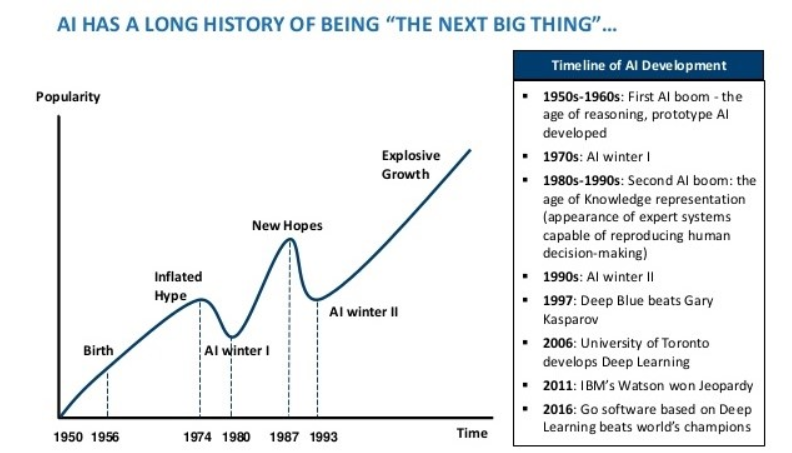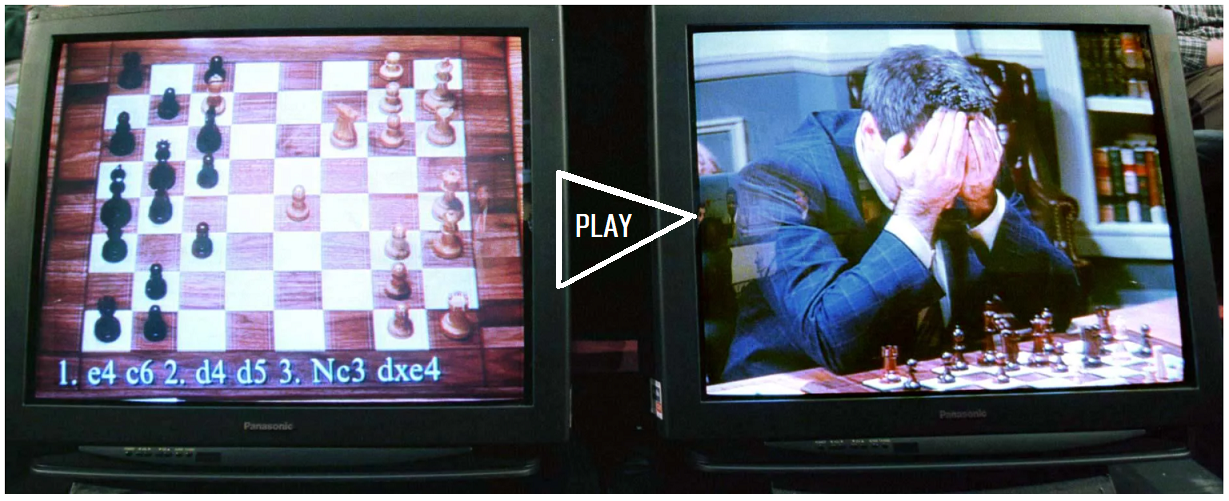Have you ever felt fascinated why something happened in the way that it happened?
Why do we always sit in the same chair or close or open the door?
Why do we use color for painting and notes for music?
Why do you need to open the computer and Google to find a response?
All of this is possible because somehow in old or modern times, an Algorithm was invented. Some sort of set of rules that help us easily navigate an environment full of too much information. And this never endless evolutive process creates, recreates our tempo and perception of human life.
Journey in AI-History
Although we can’t yet order Uber for time travel, we can still make a journey in History with TechVangArt to get us back to the point of the beginning of Algorithms.
We are at the beginning of a New Creative Era, where the supremacy of thinking and creativity does not exclusively belong to humans.
Machines are Thinking and are Creating as well, together with us, and one day, maybe totally without humans.
The lines between machines and humans will become more blurred, and we need to find a way to better understand both humans and machines.
We intend to analyze the archetypes of art expression and its relation to algorithms: the universal language – the Music (sound structure) Verbalization through literary opera (Verba and Scripta ) and different forms of visual expressions (visual representation)
So, the 3 essential senses of human expression of creativity through Sound, World, Sight but also View and their evolution.
Hitchhiking in time without Time-Machine
To find out where we are today, we will try to go back in time to the Algorithm’s origin and discover why artists needed it and what is the reason why art has chosen repeatability in detriment to the mystery of uniqueness?
When algorithms are mentioned, mathematics or computer programming comes to mind.
But Algorithmic concepts do not necessarily have to be associated exclusively with technical problems. An algorithm can be viewed also as a sequence of actions necessary to achieve an idea to obtain some final or desired result.
Therefore, algorithms mix both.
On one hand, we have the math processes of calculation, but on the other hand algorithms are based on different typology of human behavior.
Algo-Genesis-Rithms
The AlgoRithm has evolved over time like we, the humans.
Our set of rules, “if-then”s, evolved alongside technological, societal and cultural transformations.
In time (which drains faster than the rules are assimilated) new algorithms were added, other errors were made, corrected, and new algorithms crushed old ones. (like cyclical motion of life the new takes the place of the old )
And like us Humans, the Algorithm contains the historical DNA made up of myths, rituals, philosophy, exiles and worship.
And most probably, will evolve in the future alongside us (or in their own autonomy?).
The algorithm that has been working with the human creator since antiquity.
Until Art and Creativity as we know it today sitting at a new historical crossroad, it would be appropriate NOT to forget the past. Because, that’s where it is our rhizomes of our creativities, innovation, evolution. There, in our lost idea which haunts our being without materializing in something.
From Algorithms to AI. Origin of the word “algorithm»
1. In the beginning, there were the algorithms…. And there are many versions for the origins of “algorithm”.
![]() One of the most interesting is the Greek version based on the Mythical Algor sometimes called the king of Castile; in this version, Algorithm was formed from Algora-means _ God stone, mountain and Rithm – means the rhythm representation of (order). The rules ordered by the divinity.
One of the most interesting is the Greek version based on the Mythical Algor sometimes called the king of Castile; in this version, Algorithm was formed from Algora-means _ God stone, mountain and Rithm – means the rhythm representation of (order). The rules ordered by the divinity.
![]() Others consider that “algorithm” came from India through the medium of Muhammad Ibn Musa al-Khwarizmi, a Persian polymath who produced vastly influential works in mathematics, astronomy, and geography, who lived in the first half of the IX century.
Others consider that “algorithm” came from India through the medium of Muhammad Ibn Musa al-Khwarizmi, a Persian polymath who produced vastly influential works in mathematics, astronomy, and geography, who lived in the first half of the IX century.
In his most recognized work «Algoritmi de numero Indorum», Al-Khwarizmi introduces the Arabic numbers to the West, setting in motion a process that led to the use of the nine Arabic numerals, together with the zero sign.
Most probably Al-Khwarizmi have been the first to use the digit 0 to denote a missing position in the notation of a number.
In the authoritative English dictionary Webster’s New World Dictionary, published in 1957, the word algorithm is marked “obsolete” and is explained as performing arithmetic operations using Arabic numerals. And, for a long time, the concept of an algorithm was intuitive and could be expressed something like this: an algorithm is a strict system of rules that determines the sequence of actions on certain objects and after a finite number of steps leads to the achievement of the goal.
![]() One of the first formal definitions of the algorithm was given by the English mathematician A. Turing, who in 1936 described the scheme of a hypothetical (abstract) machine and called the algorithm what such a machine can do.
One of the first formal definitions of the algorithm was given by the English mathematician A. Turing, who in 1936 described the scheme of a hypothetical (abstract) machine and called the algorithm what such a machine can do.![]() The Turing hypothesis became less abstract in the 1940s, with the launch of the first programmable digital computer. And in the 1950s, when research in the field of neurology showed that the brain is a neural network, and A. Turing suggested that any kind of computing can be represented in digital form, scientists moved on to develop the first intelligent machines.
The Turing hypothesis became less abstract in the 1940s, with the launch of the first programmable digital computer. And in the 1950s, when research in the field of neurology showed that the brain is a neural network, and A. Turing suggested that any kind of computing can be represented in digital form, scientists moved on to develop the first intelligent machines.
And although their attempts were mostly unsuccessful due to the complete unsuitability of both hardware and software, it is from this moment that the history of modern AI can be counted.
At about the same time as A. Turing, the English mathematician E. Post developed a similar but simpler algorithmic scheme and a machine that implements it.
Everyone was focused on that land of promises, investments were flowing, but the results were unsatisfactory and soon the milk and honey from the financiers stopped flowing and the research was interrupted.
,![]() The winter of 1970, also called the winter of AI, began to settle in. The accounts for research were frozen, only 18 years after the recognition of AI as an academic discipline in 1956 at the Dartmouth Conference of Cognitive Scientists.
The winter of 1970, also called the winter of AI, began to settle in. The accounts for research were frozen, only 18 years after the recognition of AI as an academic discipline in 1956 at the Dartmouth Conference of Cognitive Scientists.
Regardless of the many heavy burdens of that period ”The dream must be dreamed until it becomes reality”. Enthusiastic researchers continued their studies
And it was in this winter that they came up with innovations such as ELIZA – a natural language processing computer program created at the MIT by Joseph Weizenbaum – or WABOT-1 – the world’s first full-scale humanoid intelligent robot able to walk, communicate with a person in Japanese.
But, nothing is eternal, not even disinterest from investors, corporations and governments. Since the beginning of the 90s, the modern history of the Internet begins, in the form that we know it today.

And although in the 90’s THE winter of AI was repeated, the battle between 2 intelligences ( artificial +human) paved the way for the New, Newer and Newest technologies that capture not only industries but also the human being
Well, the modern history of the Internet begins, in the form that we know it today.
Our REALITY – Our Daily PRESENT
.![]()
In the beginning, machines were learning from humans, smart machines meant machines tried to copy the human IQ. But, that was always unsuccessful. Humans were creative, smart or even genius, while machines were working on certain rules, so not creative.
The situation started to get reversed in 1997, when Deep Blue, an artificial intelligence program from IBM, defeated the reigning world chess champion Garry Kasparov.
The world was in shock, machines are smarter than man. In the same years, the world learned about NaturallySpeaking, the first publicly available speech recognition system created by Dragon Systems and other successful experiments in the field of object detection, image classification, image recognition, and machine translation.
…And a new era begins for machines...

One of the main questions is: how creative, smart can machines be?
Algorithms are based on rules, and machines have the capacity to process them at rapid speed. But, in any creative industry there is the idea “to break the rules”. At the same time a lot of innovation happened because of these Break-rulers, even our human evolution began with that..
This mindset gave birth to outstanding creators and various artistic currents, trends, movements and styles (but at the same time gave birth to criticism and destruction for the sake of the difference without value).
But, basically, new theories are possible because they change old ones.
This creative conflict is actually the proclivity towards innovation, uniqueness and creative mind.
So all this was possible because the artists have their own vision and want to be heard, seen, felt.
The secret of differences between styles can be human experience that form artists like an individual individuum, and even (or mainly) mistakes we make and our imperfection can be an important point of uniqueness.
Nowadays, AI analyses the uniqueness of some dancers, composers, painters or personal style of performers that create the difference between interpretations.
So, where do we stand when it comes to creative computation?
Stay with us as we will analyse all these creative processes that blurs the line between machines and humans, possible machine-human creations, code-art, generative art, art made by robots, but also new trends of generative NFTs or iNFTs that all challenge the limits and limitless of creativity and make us reflect on our creative future as human beings creating alongside more and more developed AIs.
TO BE CONTINUED


1 comment
[…] Time has proved that machines can think, and be creative. (Read more about the history of algorithm in our previous article, HERE, link si poza articol) […]
Comments are closed.